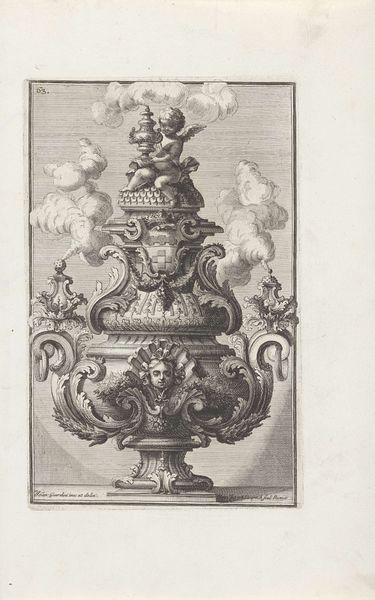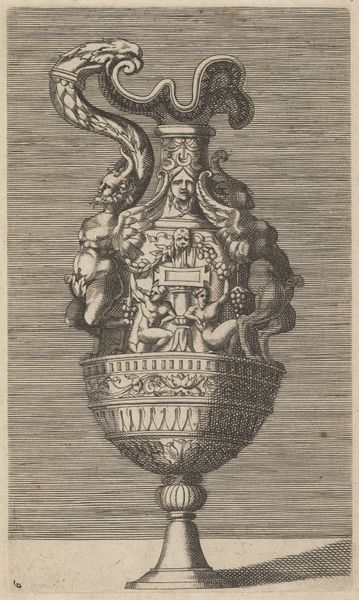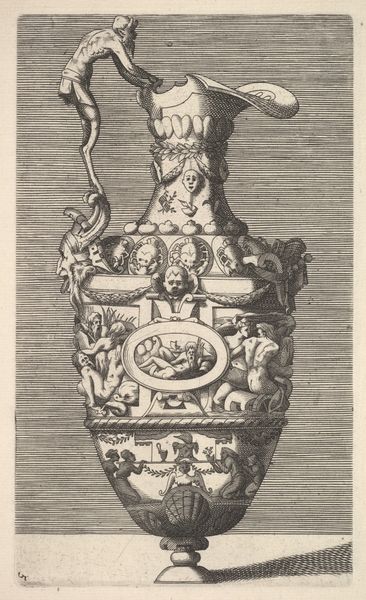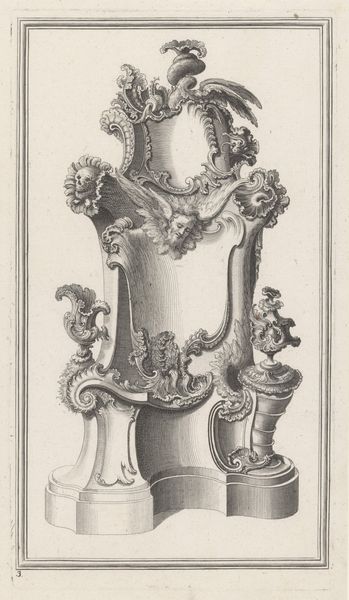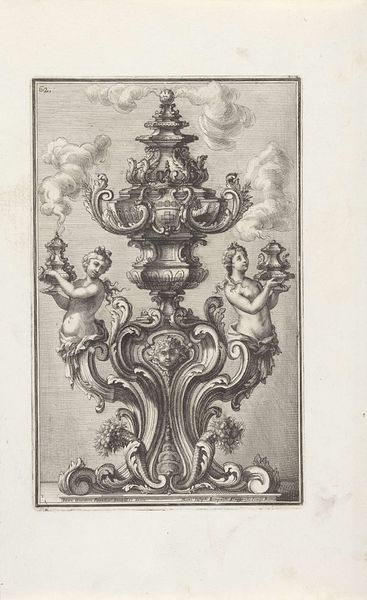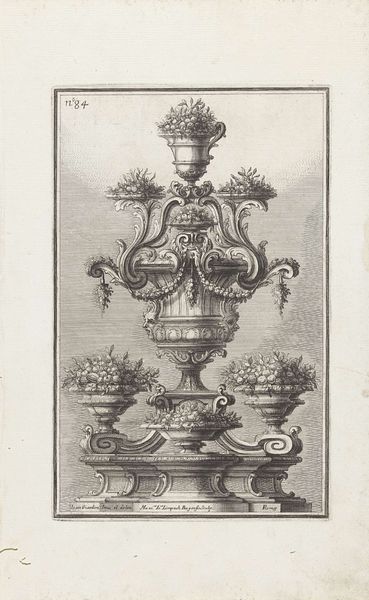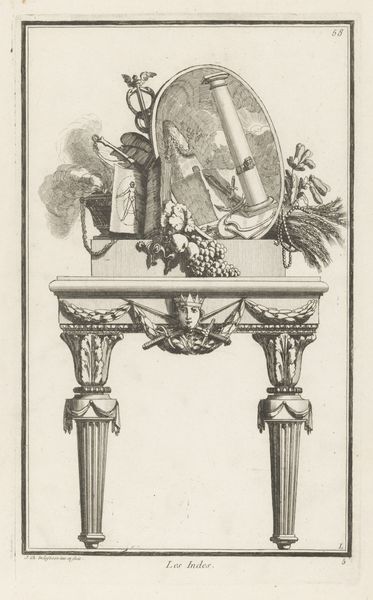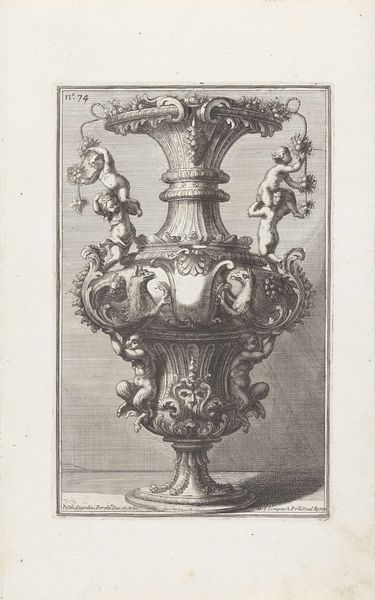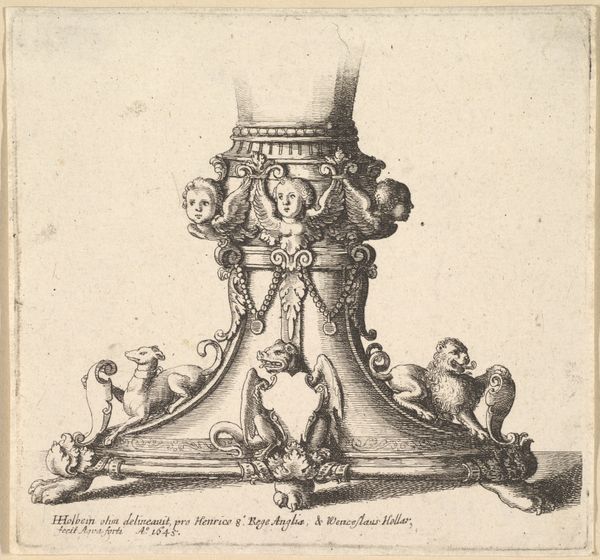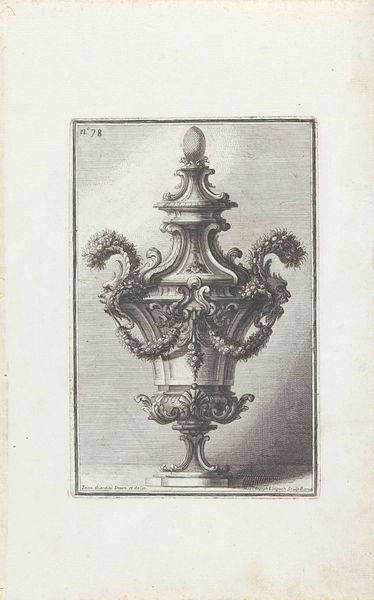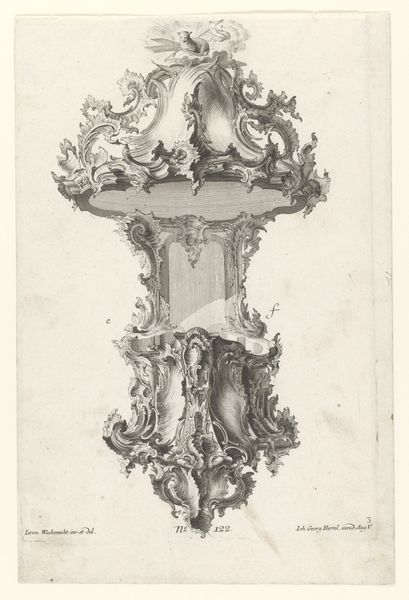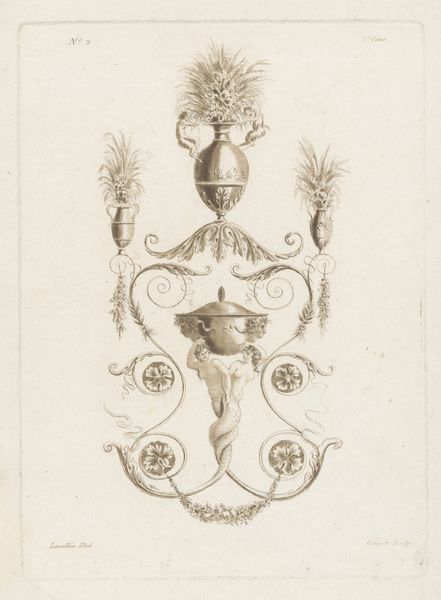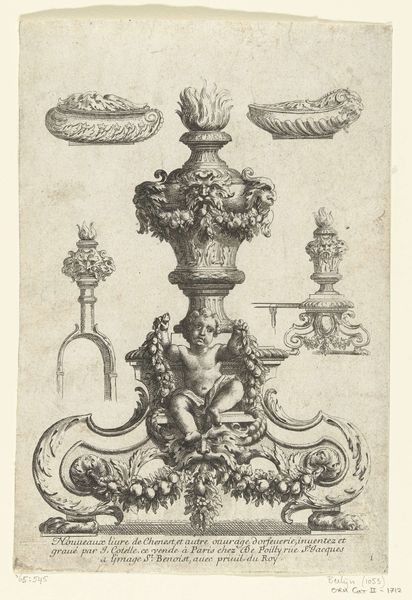
drawing, pencil
#
drawing
#
baroque
#
pencil
#
history-painting
#
miniature
Dimensions: 12 1/8 x 7 25/16 in (30.8 x 20.2 cm.) (image) 16. 3/8 x 12 9/16 in. (41.6 x 31.9 cm.) (mount)
Copyright: Public Domain
Curator: What strikes me immediately about this design is its elaborate ornamentation—those cherubs and skulls seem precariously balanced atop the structure. Editor: Precisely! We’re looking at a design for a tomb dating back to between 1740 and 1775, attributed to Ignaz Günther, currently housed in the Metropolitan Museum of Art. It’s rendered with pencil, presenting a miniature baroque aesthetic. What’s truly impressive is how the means of production mirror the intended function – it’s all about crafting a monumental and memorable space for the deceased. Curator: Yes, it embodies the period's obsession with the theatrical. This wasn't just about marking a grave; it was about staging immortality. Considering its context, what do you make of the inscription blanketing the main section? Editor: It underscores the power of patronage at the time, right? I’d speculate it likely would have contained a lengthy eulogy to commemorate the deceased, thereby justifying this elaborate structure as befitting their station in life. Tomb design, at this level, isn't purely personal; it's intensely public. Curator: Absolutely. And look at the choice of materials—we can glean so much about the intended visual effect from how the pencil is manipulated to suggest the texture of stone, or the drapery. This level of detail speaks volumes about the intended manufacturing process. Editor: And I keep returning to the politics of representation in the cherubs versus the skulls: eternal innocence flanking reminders of earthly decay. How were these symbols received? What class of person was deemed suitable for that level of symbolism in a tomb? Curator: Well, given the clear association with aristocratic tastes, it speaks of access to material and social power that would have fueled production of similar work. Editor: Thinking about social power is interesting, particularly in contrast with later movements that emphasized humility over grand pronouncements, a very important point. Curator: Indeed, thinking about materiality as embedded within systems of access is crucial to interpreting this design. Editor: And understanding its display is as critical as grasping its design!
Comments
No comments
Be the first to comment and join the conversation on the ultimate creative platform.
